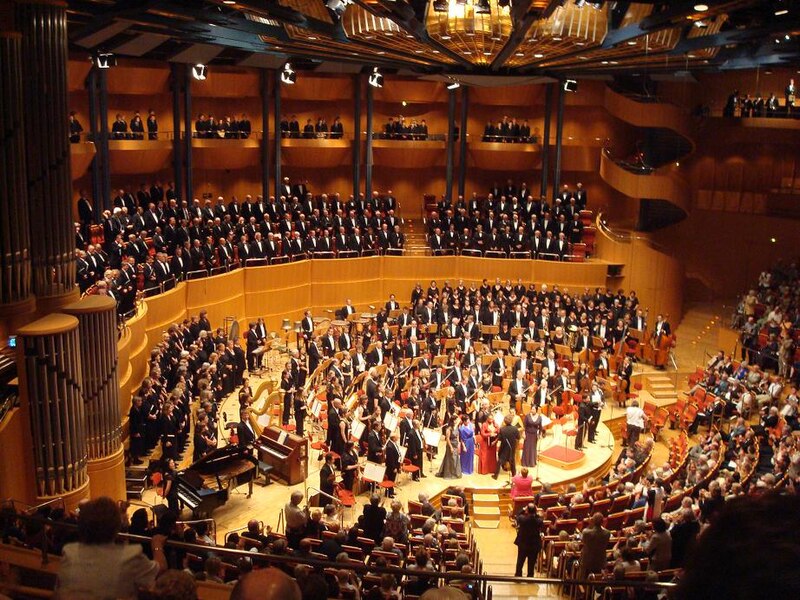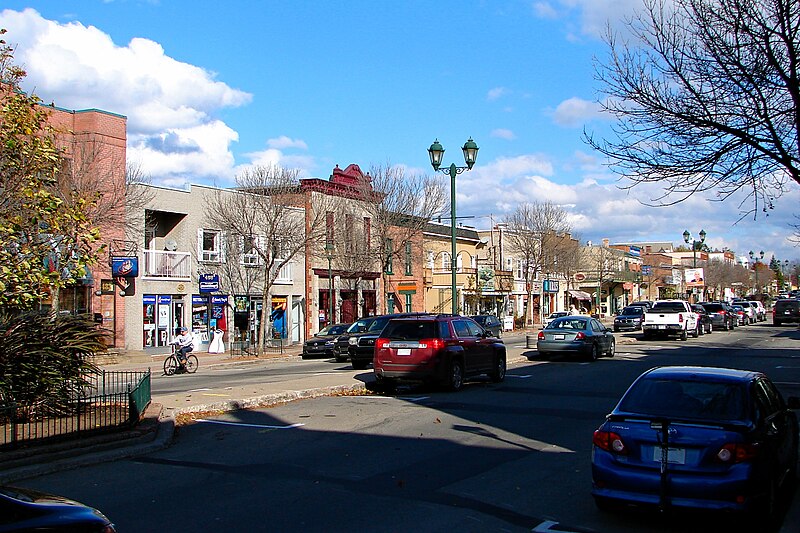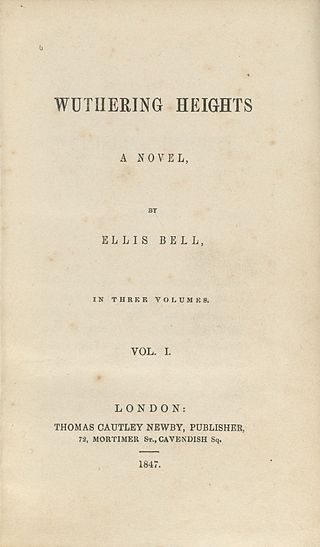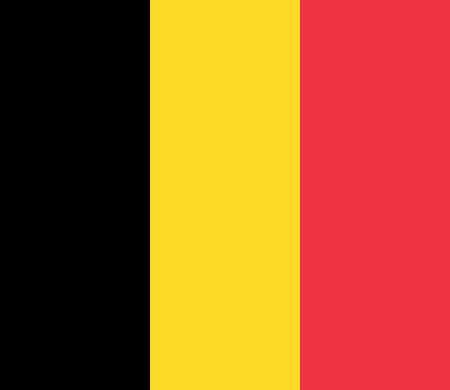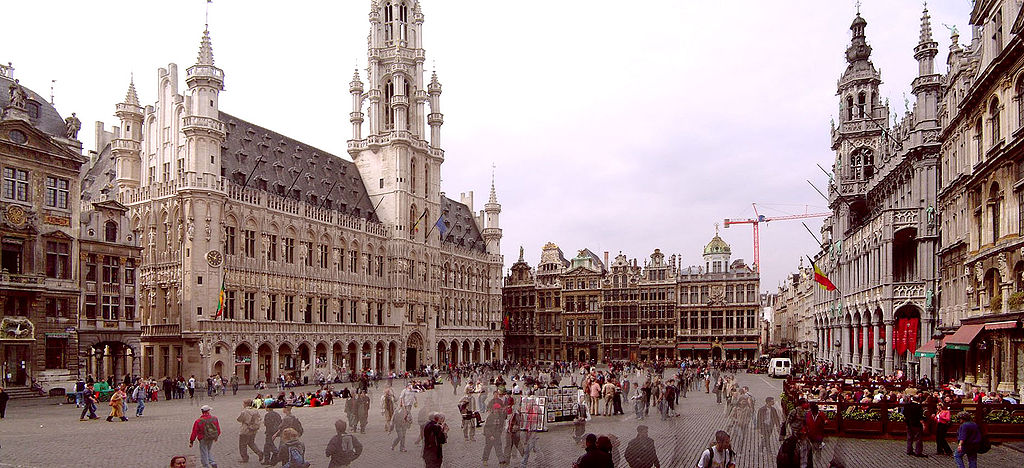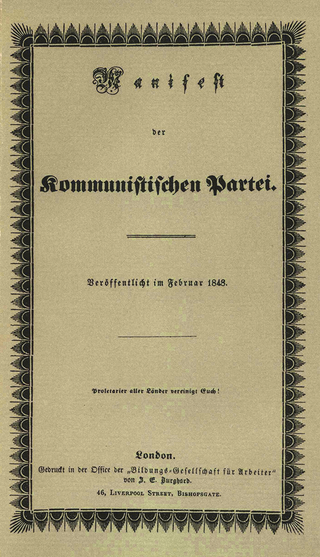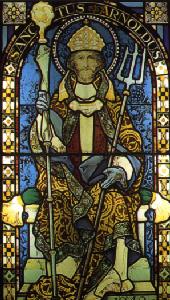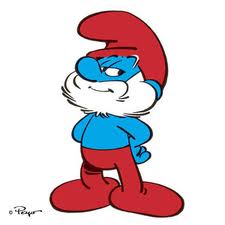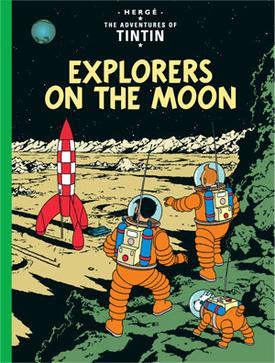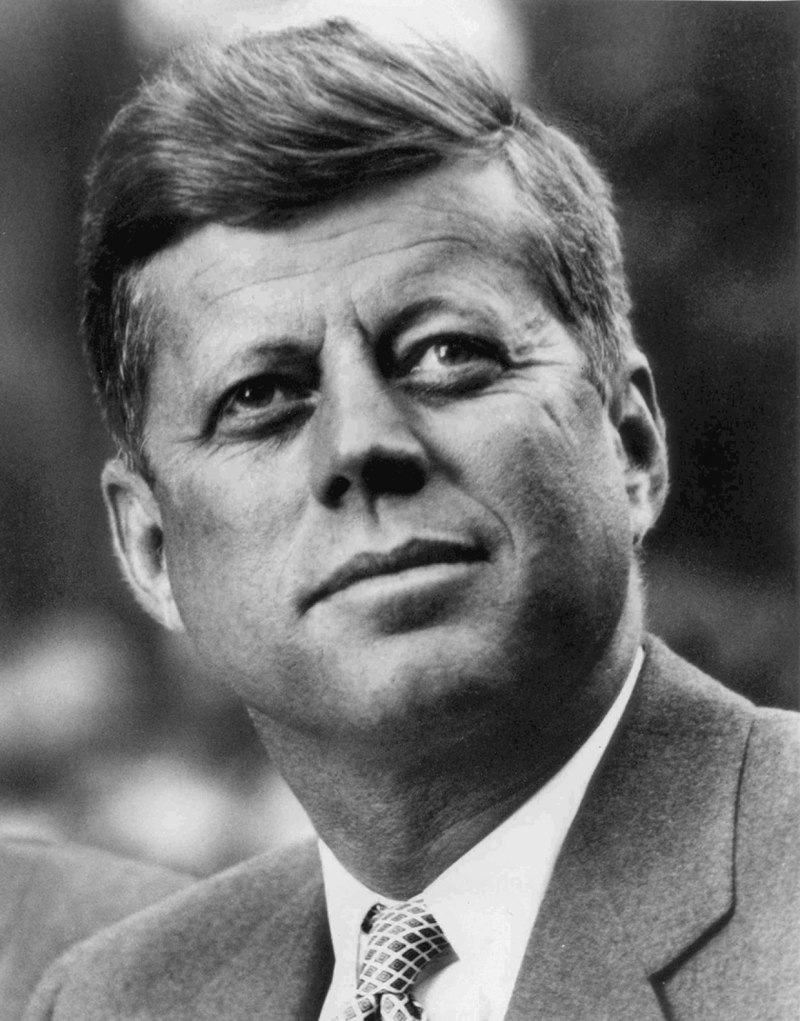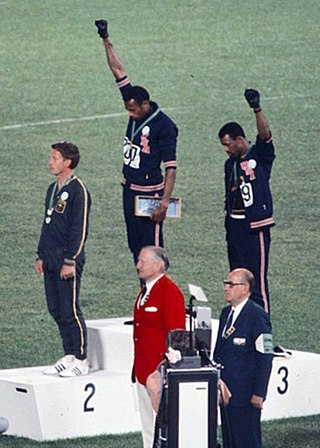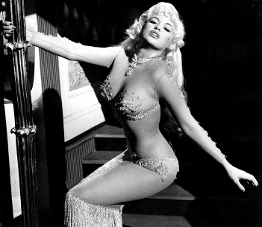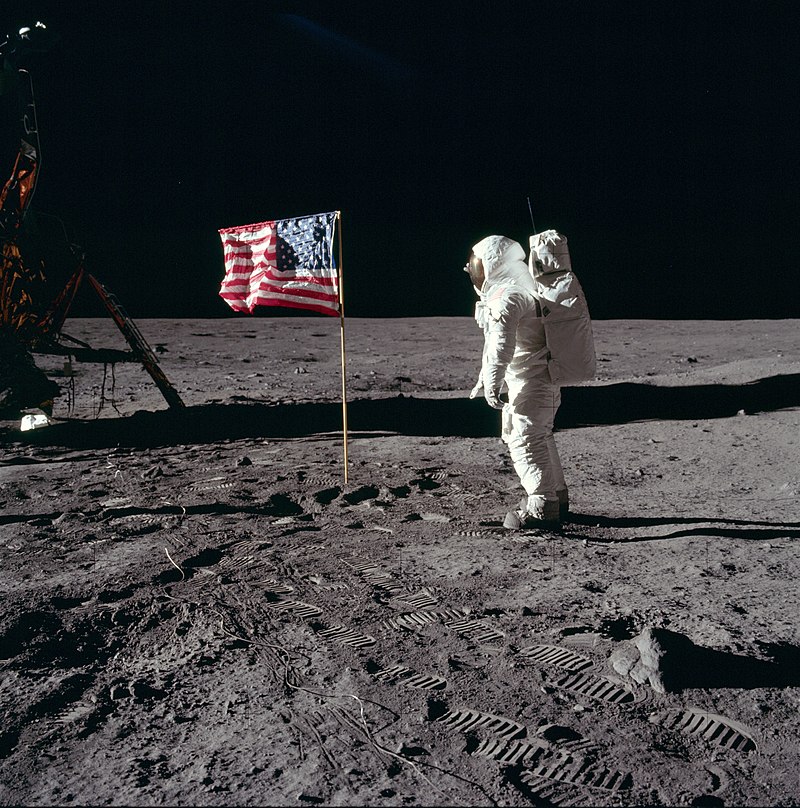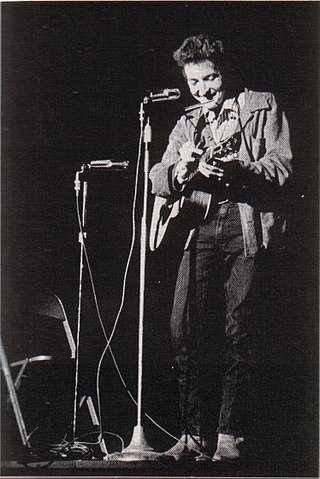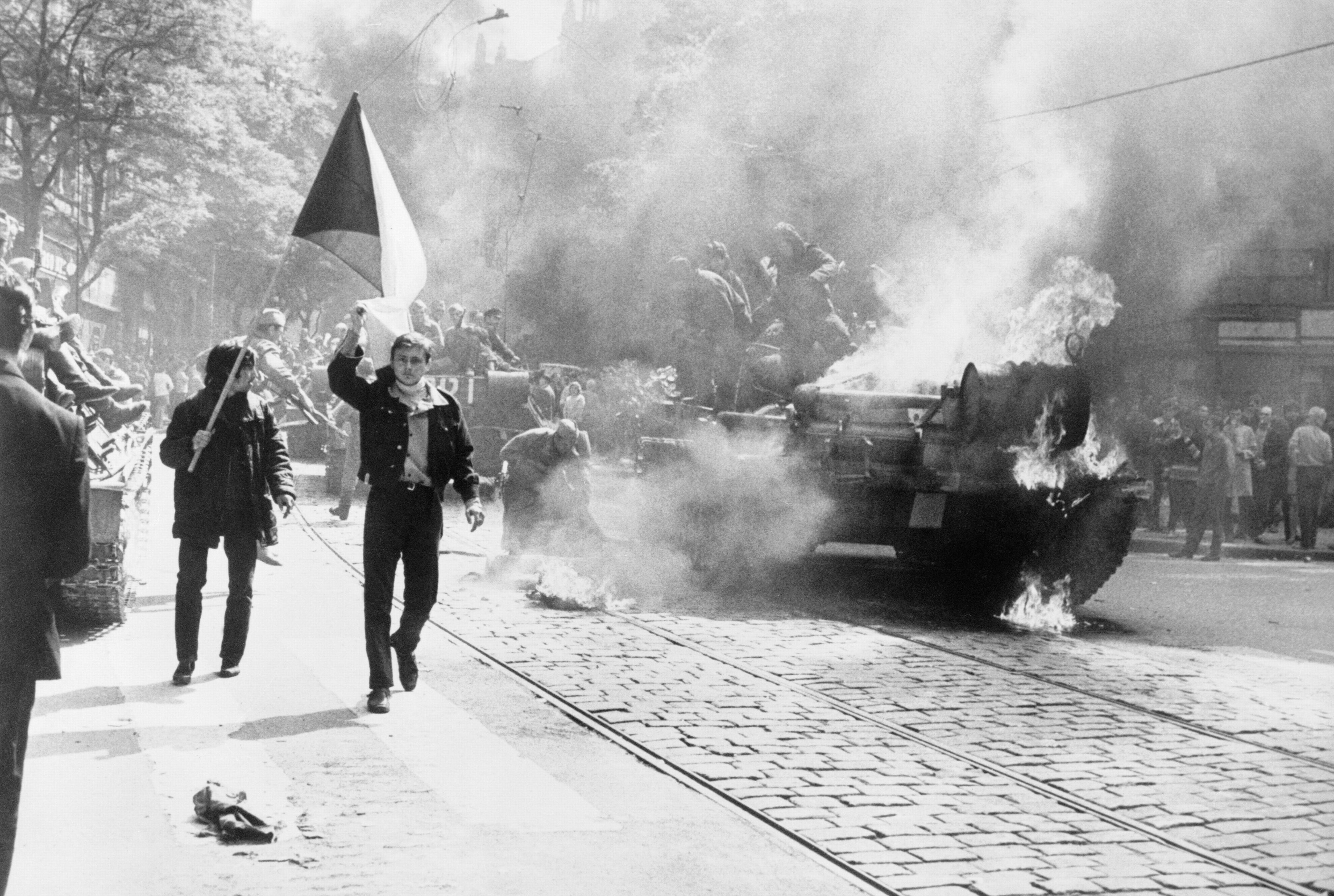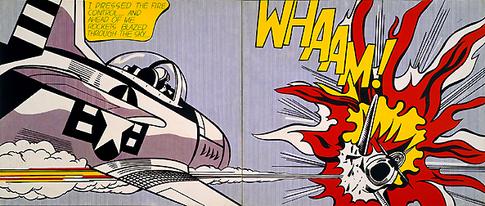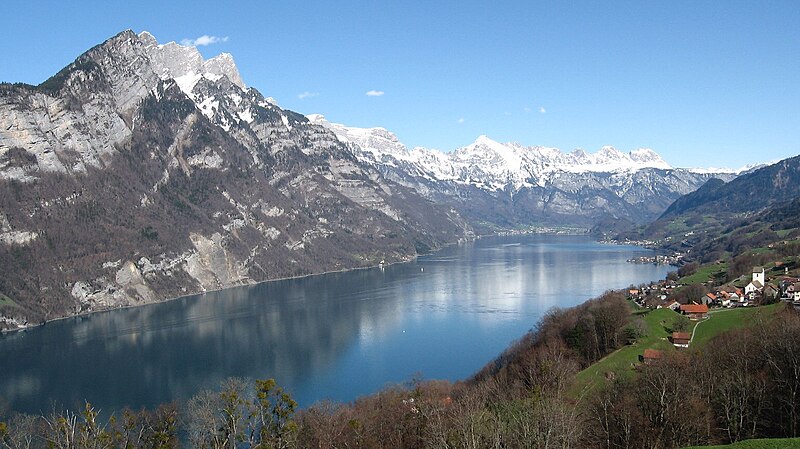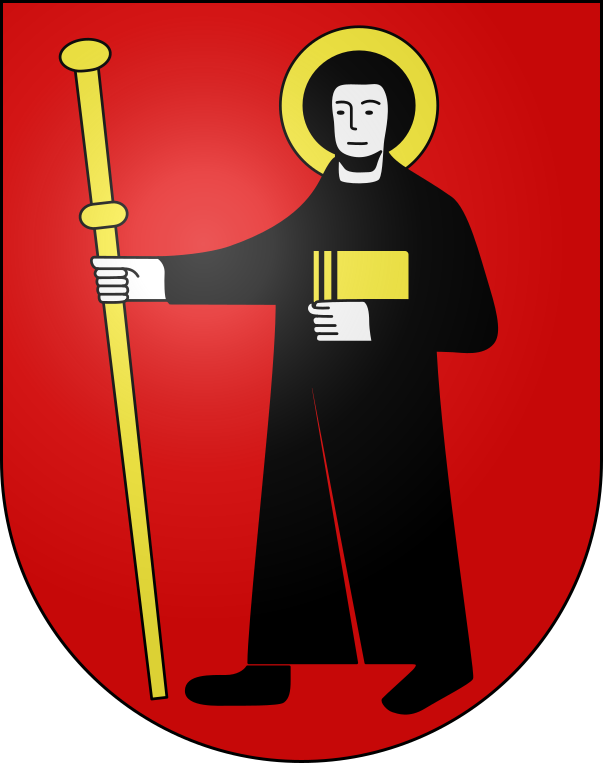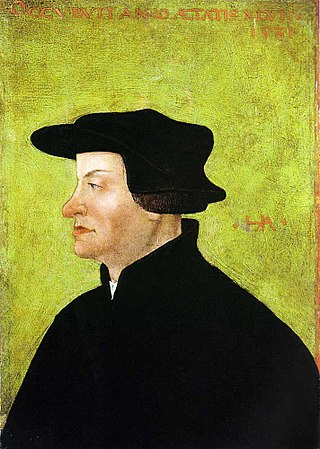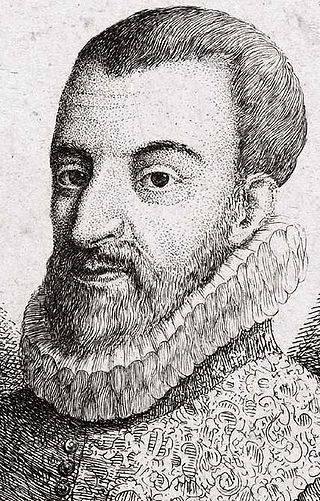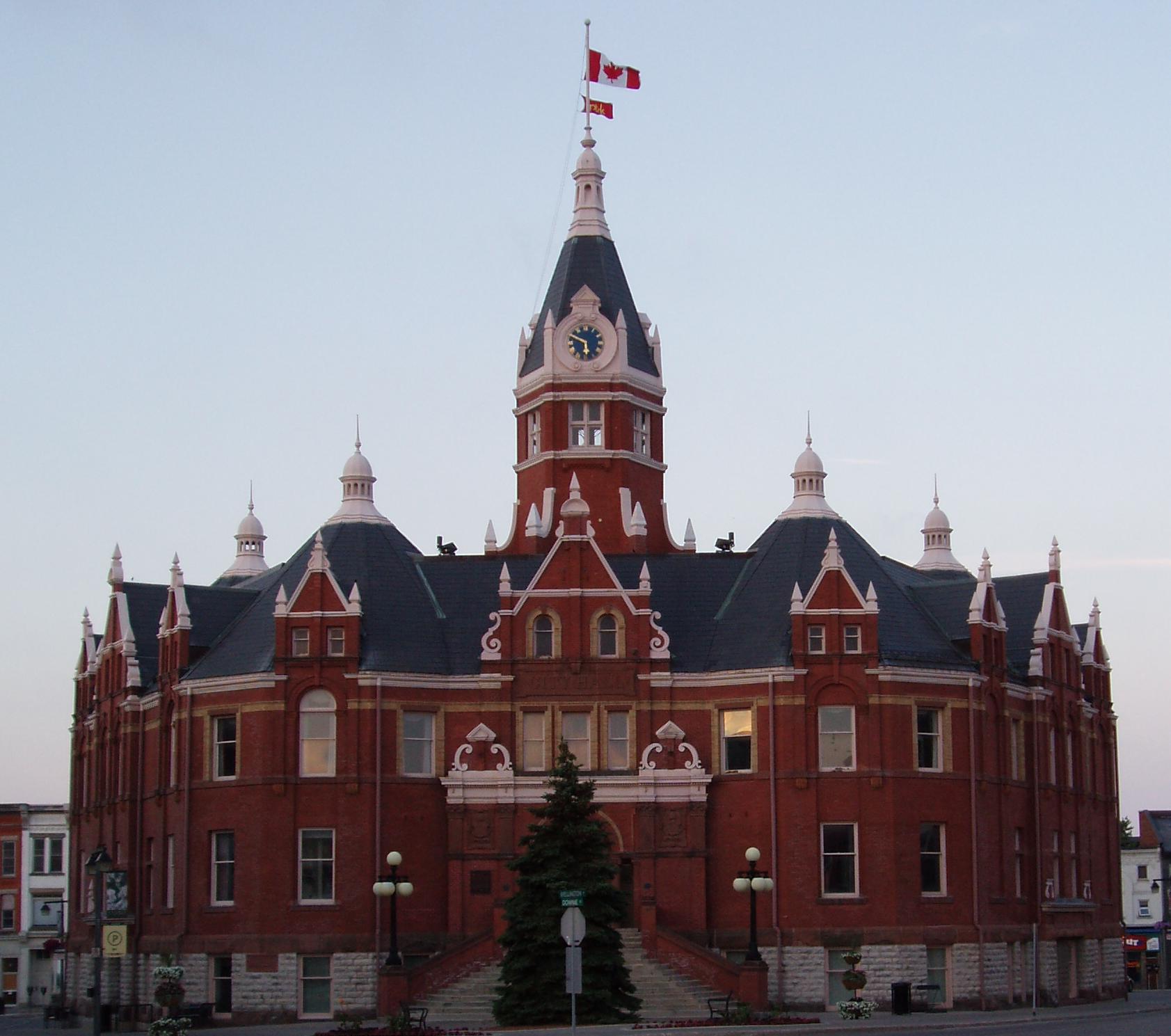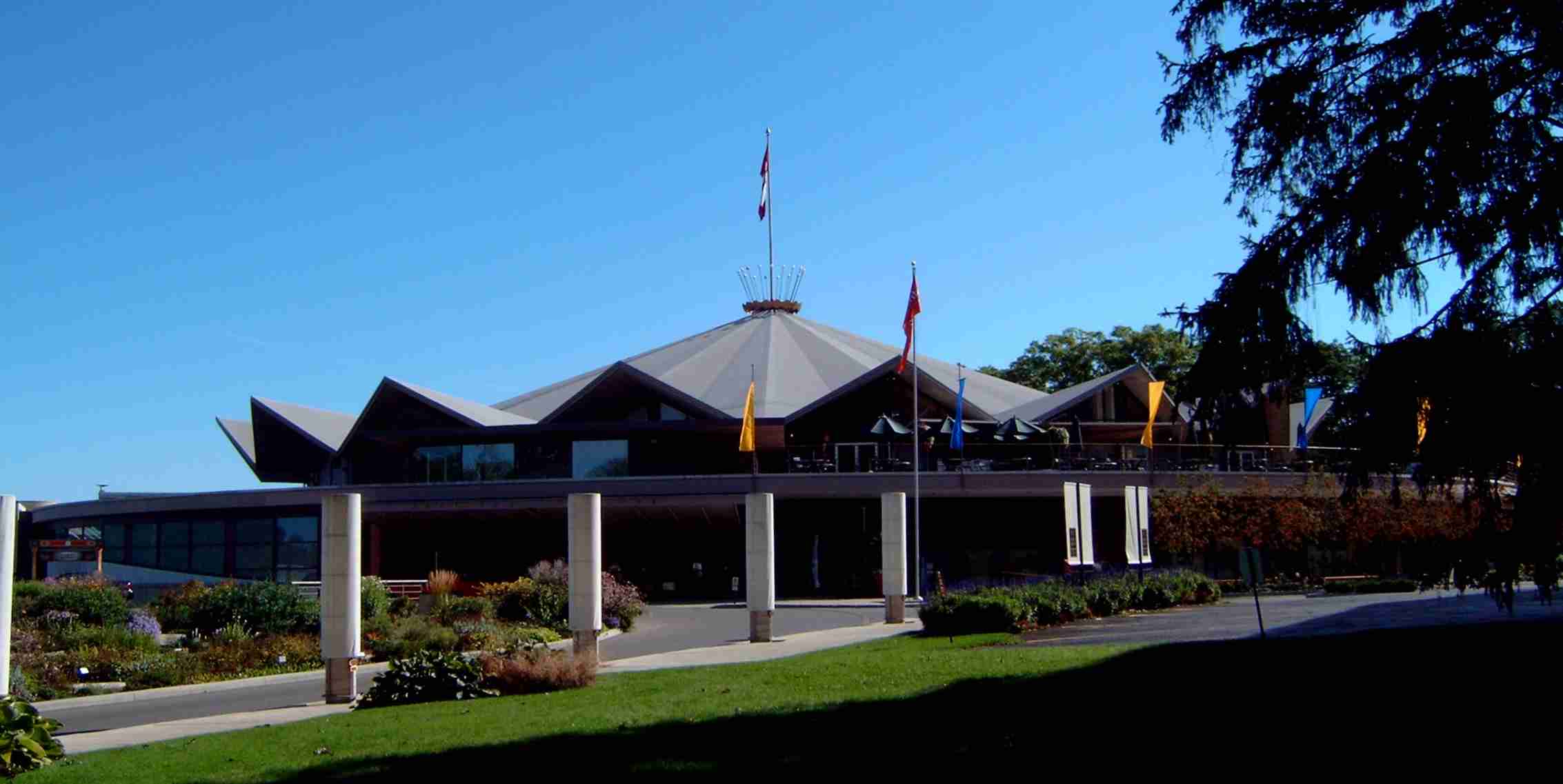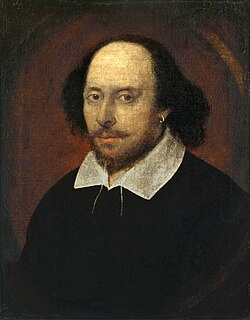Landschlacht, Switzerland, 30 December 2016
There are many things that are unpleasant about getting older: diminishing senses, unflattering changes to one´s body, memory lapses, acquisition of a world-weariness…
But for myself, especially in 2016, it has been the loss of one’s heroes.
Yet another musical legend passed away over Christmas: George Michael, age 53.

Famous for many songs, including “Last Christmas I gave you my heart”, George died from a sudden heart attack.
In a truly crappy year of celebrity deaths (Prince, David Bowie, Leonard Cohen, Carrie Fisher…to name only a few) George Michael´s demise has affected me more than the rest as his age at death is disturbingly near my own at present.
Prince´s death was pharmaceutically linked, Bowie had cancer, Cohen was not a young man…all tragic but somehow not so bone-chillingly uncommon to my own life status.
If a man only two years my senior can suddenly be no more, can I truly take for granted the time left to me?
Barring accident or lingering disease, how much time do I truly have left?
What follows is not so much resolutions I intend to pursue as they are affirmations of what I have come to realise.
Many a friend has commented to me that it is important that I write.
They have said that my past is somewhat unique, that I can on occasion string words together, that I have my moments when I have written something of significance.
I am also reminded of something that David Bowie once said in an interview: “Don´t play to the gallery.”

I have taken this to mean that I should write what matters to me.
If others love it, great.
If not, I must still continue to write what matters to me.
This blog, The Chronicles of Canada Slim, is written to express my ongoing feelings and to represent my memories and emotions that led me here to this time and place.
My other blog, much neglected, Building Everest, is meant to tell stories outside of myself.
It is my hope that those who read this particular post will feel the excitement of travel, the thrill of discovery and an appreciation of the past that I felt as I wrote what follows:
Brussels, the capital of Belgium, but now also the capital of Europe, buzzes with economic, financial and political activity.
And as I recall time spent there in 1993 and 1997 I think of Brussels as I would Ottawa, the capital of Canada, as I would have others think of me, perhaps boring at first glance, but a closer look reveals continuous momentum, regular heroics, relatable villainy, spectacular moments and a vulnerability to capture both the imagination and interest.
In reading Charlotte Bronte´s The Professor one senses that she never really liked the Belgians, especially the Flemish, but did she like Brussels itself?

The Professor was based on her own experiences in Brussels, a story of love and doubt, of a teacher seeking fortune and love while being severely tested by beguiling sensuality and manipulation.
If a city could be compared to a woman, could our assessment be affected by our experiences?
“Our likings are regulated by our circumstances.
The artist prefers a hilly country because it is picturesque, the engineer a flat one because it is convenient.
The fashionable young gentleman admires the fashionable young lady – she is of his kind.
The toilworn, exhausted, probably irritable teacher, blind almost to beauty, insensible to airs and graces, glories chiefly in certain mental qualities: application, love of knowledge, natural capacity, docility, truthfulness, gratitude are the charms that attract his notice and win his regard.
These he seeks, but seldom meets.
These if by chance he finds, he would fain retain forever.
And when separation deprives him of them he feels as if some ruthless hand had snatched from him his only ewe lamb.” (Charlotte Bronte, The Professor)
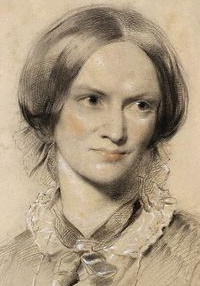
These I seek, but seldom meet.
“Zoé” had many positive aspects, but what had been felt the year previous seemed lacking within myself.
I told myself “Act as if what is wished is reality until the wish becomes reality.”.
Though she could hardly afford it, Zoé was determined to show me Brussels in the hopes that I would transfer my love for the city with similar feelings towards her.
Zoé was a maniac driver, but no more than many Europeans I would encounter in the following decades.
Breathlessly, my heart a-pounding furiously, we arrived at Bruparck.
Bruparck is close to Metro Station Heysel and is part of Heysel Park.
The Heysel / Heizel is in the north of Brussels where the Brussels International Exposition of 1935 and Expo ´58 took place.
The Brussels International Exposition of 1935 was held between 27 April and 6 November 1935.

Officially sanctioned by the Bureau of International Expositions, 25 countries officially participated and a further 5 were unofficially represented.
The theme was colonisation, on the 50th anniversary of the establishmnet of the Congo.
The fair attracted some 20 million visitors.
Belgian architect Joseph van Neck was the principal architect of the fair and of the Art Deco Palais des Expositions with its interior concrete parabolic arches and four heroic bronze statues on piers.

Among many other contributors, Le Corbusier designed part of the French exhibit.
Belgian modernist architect Victor Bourgeois designed the Grand Palace, Restaurant Leopold II and the Pavilion Soprocol.
The Belgian art exposition prominently displayed the work of contemporary Belgian artists, including Paul Delvaux, René Magritte and Louis Van Lint, boosting their careers.
Expo ´58 (the Brussels World´s Fair) was held from 17 April to 19 October 1958, the first major World´s Fair after World War II.

Nearly 15,000 workers spent three years building the two square kilometre site on the Heysel plateau, using many of the buildings from the Brussels International Exposition of 1935.
Expo ´58 was the 11th World´s Fair hosted by Belgium and the 5th in Brussels, following the fairs in 1888, 1897, 1910 and 1935.
Since 1958 Belgium has not arranged any more world fairs.
This huge event was a showcase for Belgium and 40 other countries.
More than 41 million visitors visited the Expo, which was opened with a call for world peace and social and economic progress, issued by King Badouin.
Three million visitors travelled in the cable car which soared above the Expo.
Eight babies were born on site.
With the slogan “Building a world for the modern man”, Expo ´58 sent out a message of boundless optimism, confident and enthusiastic about the future of humanity.
In spite of its message of peace and friendship between nations, Expo ´58 was not immune from the tensions of the Cold War.
Beneath the Atomium, the United States and the Soviet Union defied each other in symbolic confrontation.
The Soviet pavilion was a large impressive building, which they folded up and took back to Russia when the Expo ended.

Within the pavilion the Soviets displayed a facisimile of Sputnik, the world´s first artifical satellite, and a model of the Lenin, the world´s first nuclear icebreaker, representing the success of a Communist society.

The Sputnik copy mysteriously disappeared and the US was accused of stealing it.

The American pavilion was quite spacious and vaunted the American Dream – the consumer society and the comforts of modern life.

The US pavilion included a fashion show with models walking down a large spiral staircase, an electronic computer that demonstrated a knowledge of history, and a colour TV studio behind glass.
The Philips pavilion played the Poeme électronique from 425 loudspeakers placed throughout the park.

The Austrian pavilion included a model Austrian Kindergarten which doubled as a daycare for the employees, the Vienna (Wien) Philharmonic playing behind glass and a model nuclear fusion reactor that fired every five minutes.

An original manuscript of Mozart’s Requiem was placed on display.
Someone somehow gained access to the manuscript and tore off the bottom right corner of one of the pages containing the words “Quam olim d:C” in Mozart´s handwriting, possibly the last words Mozart wrote before he died.
During the six months of the Expo, 300 friendly, multilingual and devoted young ladies welcomed and guided millions of visitors who flocked to the site.
Dressed in red jackets and blue hats, disciplined and flirtatious at the same time, the Expo ´58 hostesses were considered the epitome of the modern woman of those times.

Joyful Belgium, a reconstitution of a village from olden times, was a place of entertainment with a festive atmosphere, constantly bursting with crowds of visitors eating, drinking and having fun.
20,000 workers, including 500 gardeners, served 20,000 meals every day in the 70 restaurants on the Expo site.
Belgian beer flowed copiously bringing joy to many who staggered on cobblestones filled with spirit and memories.
But every event has its dark side which the Art of Design Atomium Museum (ADAM) will not seek to draw the visitor´s attention to…
Inside the Belgian pavilion was the Congolese village, a human zoo, showing exotic humans living in their natural state, to emphasise the cultural differences between Europeans and those people they regarded as primitive in a display that was highly degrading and racist.
Congolese in cages in a nude or semi-nude state forced to work on typical village tasks pretending that the gawking visitors did not exist.
Belgian King Baudouin visited the fair in the company of actress Gina Lollobrigida.
Expo ´58 remains a part of the Bruxellois psyche as its best known site still remains a symbol of the city of Brussels.
The Atomium is a giant model of a unit cell of an iron crystal, expanded 165 billion times, with each of its nine spheres representing an atom.

Designed by the engineer André Waterkeyn and architects André and Jean Polak, it stands 102 metres / 335 feet tall.
Its nine 18 metre / 60 foot diameter stainless steel clad spheres are connected by tubes of 3 metre / 10 foot diameter.
These tubes enclose stairs, escalators and a lift in the central, vertical tube allowing access to the five habitable spheres containing exhibit halls and other public spaces.
The top sphere contains a restaurant with a panoramic view of Brussels.
Jessica Canepa of CNN in her 24 January 2013 report “11 of Europe´s most bizarre buildings” named it Europe´s most bizarre building.
When Zoé and I visited the Atomium in 1993, the Atomium´s spheres were clad with aluminum.
Following renovations in 2007, the aluminum was replaced with stainless steel.
The aluminum was sold to the public as souvenirs to pay for the renovations.
A triangular piece about 2 metres / 7 foot long sold for €1,000 in 2006.
Three of the four top spheres lack vertical support and are therefore not open to the public for safety reasons, although the sphere at the pinnacle is.
Waterkeyn´s original design called for no supports.
The sphere was simply to rest on the spheres.
Wind tunnel tests proved that the Atomium would have toppled in an 80 km/h wind.
(140 km/h winds have been recorded in Belgium.)
Support columns were added in 2006 to achieve enough resistance against overturning.
(Though a building weighing 2,500 tonnes will take one hell of a gust to topple it…)
The Atomium is open every day of the year from 10 am to 6 pm and receives 2,300 individual visitors every day or 600,000 visitors per year.
The record number of visitors in one day: 4,700 on 17 August 2008.
Each year on average the Atomium is visited by 10 heads of state, privately or officially.
Visitors are provided audioguides in 28 languages.
There are 873,000 references to the Atomium on the Internet with more than 13,000 Facebook fans.
In addition to its unique architecture, the Atomium already boasted the fastest lift in Europe in 1958, with a speed of 5 metres per second / 18 kph.
What breath had been regained from Zoé´s driving was once again swept from me by this heady ascent as the entrails of the central tube sped by at a pace hummingbirds would have been impressed by.
And the view…
It has been boasted that on a clear day one can see Antwerp to the north or the Atlantic to the west, but on 8 November 1993 I recall only seeing the Palais des Expositions, the Planetarium and Mini-Europe, the Grand Place, the Royal Palace and the EU district.
For Expo ´58 a new airport terminal was added to the Melsbroek National Airport, on the west side of the Airport, on the grounds of the municipality of Zaventem, which has since become the name of the International Airport.
(Zaventem Airport might register in the minds of today´s readers as it was the first target of the 22 March 2016 Brussels bombings.

At 07:55 Ibrahim El Bakraoui (29), Najim Laachraoui (24) and Mohamed Abrini (b. 1984) arrived at Zaventem in a taxi.
At 07:58, in check-in row 11 and check-in row 2 of Zaventem´s departure hall, Bakraoui and Laachraoui committed suicide by exploding nail bombs in their suitcases nine seconds apart.
Abrini failed to detonate his bomb due to the force of Laachraoui´s explosion.
At 09:11 Khalid El Bakraoui and Osama Krayem committed suicide in the middle carriage of a three-carriage train at the Maalbeek metro station.
The bombings killed 32 civilians and injured more than 300 people.
The bombings were the deadliest act of terrorism in Belgium´s history.)

(Heysel Park also brings to mind another tragedy of a different sort:
On 29 May 1985, Liverpool were the defending European Champions Cup winners facing Juventus – both this English club and their Italian competitor club were considered the best two teams in Europe at the time.
Despite Heysel Stadium´s status as Belgium´s national stadium, it was in a poor state of repair by the time of the 1985 European Final.
The 55-year-old Stadium had not been sufficiently maintained for several years and large parts of the Stadium were literally crumbling.
A few years before Arsenal fans called Heysel “a dump” when Arsenal had played there.
Both Juventus and Liverpool had urged the UEFA to choose another venue, claiming that Heysel was not in any condition to host a European Final, but UEFA refused to consider a move.
The Stadium was crammed with 60,000 supporters, with more than 25,000 for each team, between them a neutral area reserved for neutral Belgian fans.
Brussels has a large Italian community and many Juventus fans were in the neutral zone, causing Liverpool fans to perceive that Juventus fans had been accorded more seating rights than they had.
At 7 pm, an hour before kick-off, trouble began.
Liverpool and Juventus supporters were mere metres apart – the boundary between them was marked by a temporary chain link fence and a central thinly policed no-man´s land.
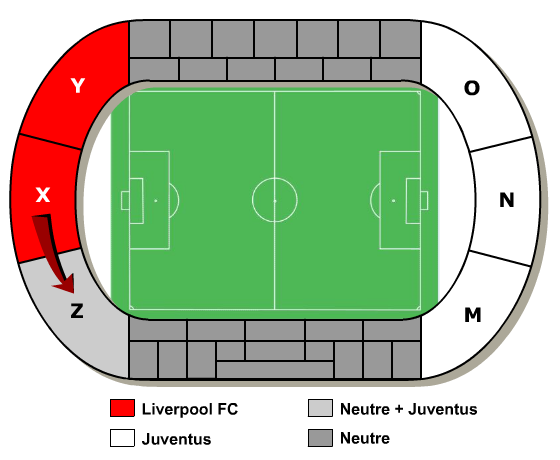
Fans began to throw stones across the divide, using the crumbling terraces under their feet.
As kick-off approached, the throwing became more intense.
Several groups of Liverpool fans broke through the boundary separating them from the Juventus fans, overpowered the police and charged the Juventus fans.
Juventus fans began to flee toward the perimeter wall.
The wall could not withstand the force of the fleeing Juventus supporters and a lower portion collapsed.
The collapse allowed fans to escape, but 39 fans died and 600 fans were injured by suffocation or from being crushed against the wall before its collapse.
Bodies were carried out from the Stadium on sections of iron fencing and laid outside, covered with giant football club flags.
In retaliation for the neutral zone attack, Juventus fans in their end of the Stadium then rioted, fighting the police with rocks and bottles for two hours.
Despite the scale of the disaster, UEFA officials, the Belgian Prime Minister, the Brussels mayor and the city´s police force felt that cancelling the match would incite further trouble and violence.
The match eventually kicked off after the captains of both teams spoke to the crowd and appealed for calm.
Juventus won the match 1 – 0.
29 Liverpool fans were charged with manslaughter, 14 of them convicted.
On 29 May 2005, a sundial sculpture was unveiled at the new Heysel Stadium to commemorate the disaster.
Thirty-nine lights shine, one for each who died that night.)
At the foot of the Atomium, Mini-Europe is a miniature park with reproductions of monuments in the European Union on show, at a scale of 1:25.

Roughly 80 cities and 350 buildings are represented.
The park contains live action models, such as trains, mills, an erupting Mount Vesuvius…
(There is something just wrong about trivialising one of the most volcanic eruptions in European history.

Mount Vesuvius spewed a deadly cloud of gas, stones and ash to a height of 33 kilometres (21 mi), ejecting molten rock and pulverized pumice at the rate of 1.5 million tons per second, a hundred thousand times the thermal energy of the Hiroshima bombing.

Several Roman settlements were obliterated and buried, the most well known being Pompeii and Herculaneum.

The remains of about 1,500 people have been found at Pompeii and Herculaneum, but the overall death toll is still unknown.)
…and cable cars.
A guidebook gives the details on all the monuments.
At the end of the visit, the Spirit of Europe exhibition gives an interactive overview of the European Union in the form of multimedia games.

As fascinating as it is to play the role of Lemeul Gulliver among the Lilliputians, I wanted to experience these wonders of Europe first hand without a sneak peek so I chose not to visit Mini-Europe.
As I type these words there remains much I have yet to see of Europe, but my feelings have not changed in this respect.
In Bruparck there stands an aquatic park – It was winter when we visited. – slated to close on 1 October 2018, Océade offers 14 waterslides, a wave pool, a rope bridge, interactive video games, an aquatic playground, three saunas (a hammam, a jacuzzi and a Finnish ice bath) – all with a Pirates of the Caribbean feel.

It is said to be the best-equipped aquatic park in Belgium.
Zoé reminded me that Océade was still trying to rebuild its reputation from the July 1992 incident when two children, ages 5 and 7, drowned in the park.
Thierry Den Doncker, the director of Océade, was found guilty of involuntary homicide by default in December 1996.
Still Océade has maintained its reputation as a fun place, receiving 230,000 visitors to the park every year.
The waters are subtropical at a temperature of 29° Celcius, just perfect on a winter´s day.
Nearby the giantic Kinepolis offers 27 cinemas and IMAX.
As enjoyable as exploring Brussels with Zoé was, and I was extremely grateful to her for spending time and money to be my guide to the city, part of me wanted to discover the city for myself.
Seeing a place through a local´s eyes gives one a perspective that a tourist rarely experiences.
Stubbornly I wanted to make Brussels my experience rather than simply sharing Zoé´s experience of it.
I wanted to get lost and discover the city serendipitiously.
Zoé took this as a rejection of her.
It took an infinite amount of long discussions, debates, persuasion and patience to get Zoé to grant me a few hours of liberty from her side.
Granted liberty, I headed for the downtown core of Brussels to do the mundane activities that a tourist does when abroad: mailing postcards, checking e-mail in an Internet café and finding a café or tavern one can call one´s own.
Over cafés au lait, political discussion at the Café Arcadi with two Belgians and another Canadian (a young lady from Lake Nipissing)…
Belgium is not a country, the two young Bruxellois university students informed us, but rather a political creation.
Unity between the Flemish and Walloons remains fleeting, a mere whisper in the wind barely heard but desperately sought.
But it is this ability for Belgians to have two diametrically opposed peoples share one country that convinces our local drinking companions that it was the Belgians that created “civilisation”.
To talk to a Belgian is to talk with the world-weary, for Belgium is more than chocolate and diamonds, medieval buildings and comic books, it is a land riddled with corruption, seediness, tension and scandal.
Belgium remains in a mind a country that is a breath away from coming undone.
And to listen to a Belgian speak is to court depression, for there seems to be a litany of problems to worry one´s self sick over in Belgium.
Milk causing cancer, arms deals with greased palms, the constant hiss of secessionism, the spectre of paedophilia, bizarre murders and crimes that would have challenged Agatha Christie´s Hercule Poirot, the sale of passports to criminals, reunions of Nazis, a history of colonial genocide…what topic do you wish to talk about first?

Above: David Suchet as Hercule Poirot
And living with your neighbour does not mean loving your neighbour.
The Flemish and the Walloons are locked in a marriage of convenience but not comfort.
In the port city of Antwerp, Belgium´s second-largest metropolis, the world´s biggest distributor of diamonds, one finds a hotbed of tension.
Known as the Jerusalem of the West, Antwerp is home to 20,000 Jews, most of which live in the old Jewish quarter.
Right next door is the Arab quarter, home to the city´s 30,000 Moroccans and Turks.
Thrown into this volatile mix Antwerp is also the headquarters of the anti-immigrant party Vlaams Blok, whose main objective is for Flanders to secede.

Both past and present Belgium is a battlefield.
A strange battlefield of baroque buildings, thick forests, fantastic restaurants, swan-filled canals, crumbling housing, dodgy areas, port crime, war cemeteries, blood-soaked battle grounds, ethnic turmoil, language barriers, racist graffiti, corruption so common it´s casual, a lack of planning and it no longer seems strange that Belgians like to drink.
Happily drinking is one of the best things to do in Belgium, as the country has over 400 beers of amazing flavours.
But to this casual observer, Belgium feels like it was thrown together without any vision, without any rhyme or reason.
The young Bruxellois lads were, of course, curious about Canada, for it too is a land that remains sharply divided along linguistic lines: English vs French.
But as visiting Anglophone Canadians to Brussels we held fast to a unity that we cherish, but as complex as English-French relations are in Canada the difficulties of Ottawa pale by comparison to politics in Belgium.
In Canada, Canadians have one national Parliament and each province has its own legislature.
In Belgium there are six individual Parliaments with each national party split in two – one representing Flanders in the north and one representing Wallonia in the south.
60% of Belgians speak Flemish, but in Brussels 80% of the population speaks French.
In 2001, I would later read that a train crash in Belgium that killed 8 people was caused because the signalmen – one Walloon, one Flemish – spoke different languages and couldn´t communicate.
But for all their problems it must be admitted that Belgians are interesting.
Take a few examples:
King Albert II (reigned from 1993 to 2013) loves motorcycles and riding them fast, to judge by the number of times he has been pulled over.

Jean-Michel Nihoul, Brussels businessman and self-proclaimed “Monster of Belgium”, suspected for numerous crimes, won´t be prosecuted because he can name too many government officials involved in his sex parties.
King Leopold II (1835 – 1909), responsible for opening up the Congo to Belgian development and genocide and making a fortune in the process, loved nothing more than riding around on an oversized tricycle and sneaking off to court his teenage French lover.

Georges Simenon (1903 – 1989), celebrated for his Inspector Maigret stories, was unique:
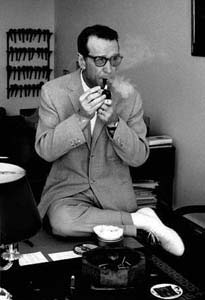
Simenon wrote at least 4 books a year – totalling more than 500 by the time he died – in between having sex three times a day.
Known as “the man of 10,000 women”, Simenon still managed to write 80 pages a day, typically meeting his goal of finishing a book within two weeks.
(“Francois”, Zoé´s father, with two mistresses, clearly found his role model.)
René Magritte (1898 – 1967) brought the absurd to the commonplace and the everyday to the bizarre in precise frozen images that always contained a snippet of logic and the whisper of a joke, but Belgians didn´t appreciate him.

In 1927, Belgian art critics so demonized his first show of reality-questioning, surrealistic paintings that Magritte moved to France.
It took Magritte another two decades for his work to be acclaimed as innovative.
Pieter Brueghel the Elder (1525 – 1569) is worth mentioning for several reasons:

Above: Pieter Brueghel the Elder´s The Painter and the Buyer (1565)
Brueghel, unlike his 16th century contemporaries, dared to paint other themes outside of religion or portraits of the wealthy.
His landscapes weren´t just Biblical backdrops, but vibrant village life captured in all its bawdy detail and glory.
No detail is insignificant in a Brueghal picture, for each minutae is a vignette that tells a tale of life in the 16th century more dramatically than a library of historical tomes ever could.
And in a sense Brueghal captures the essence of Brussels, not just in illustrating life then but as well a message about life now.
When I recall my conversation in Café Arcadi, the drownings at the Océade, the Heysel Stadium tragedy, the bombings of Brussels, the paintings of Brueghal and the recent death of George Michael, I am left with one final impression:
Seize the moment.
Appreciate the moment.
Capture and keep that moment close.
For God only knows how many more moments are left to us.

Sources: Wikipedia / Charlotte Bronte, The Professor / Melissa Rossi, The Armchair Diplomat on Europe














![Black Standard flag[1]](https://upload.wikimedia.org/wikipedia/commons/thumb/2/28/AQMI_Flag_asymmetric.svg/800px-AQMI_Flag_asymmetric.svg.png)






